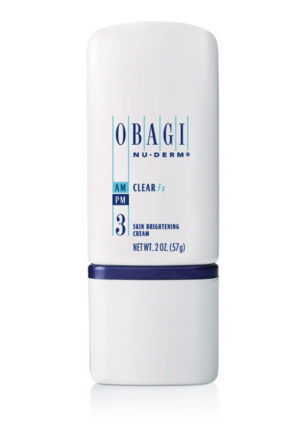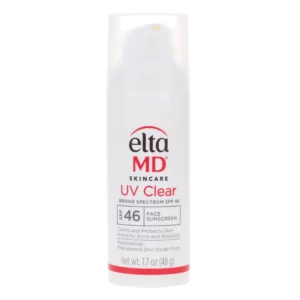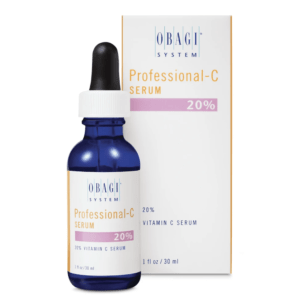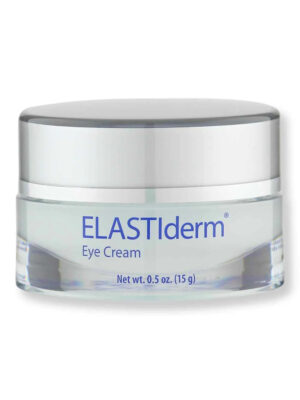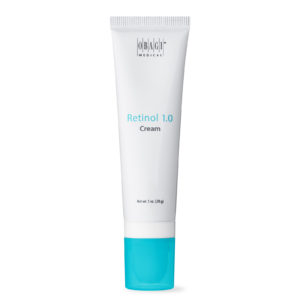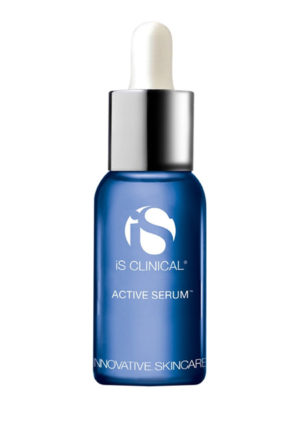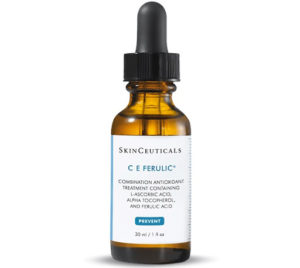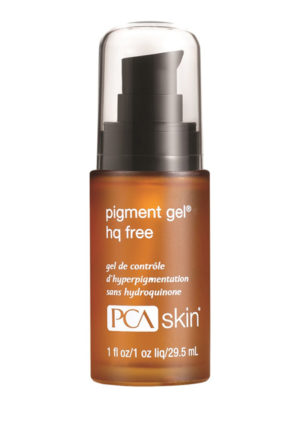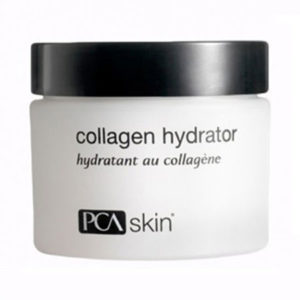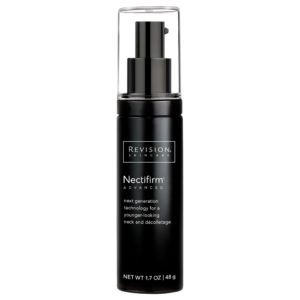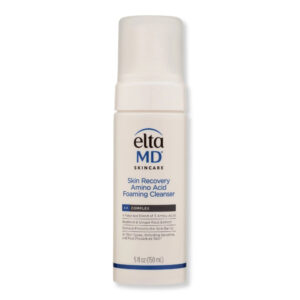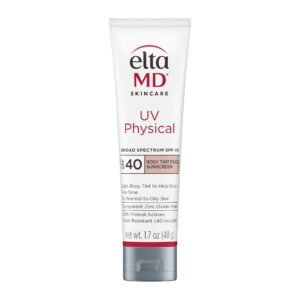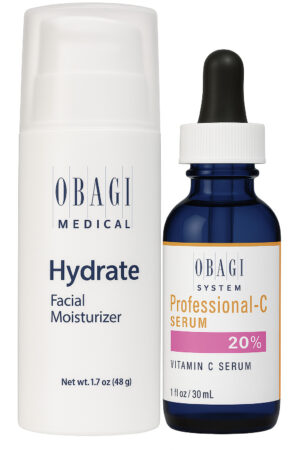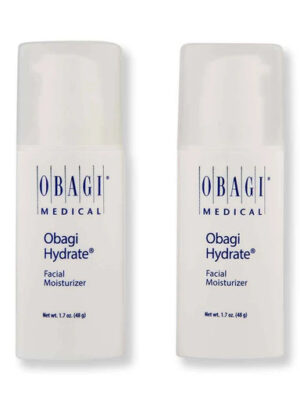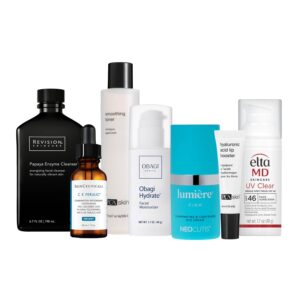Mistakes. They happen to the best of us!
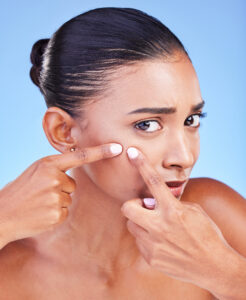
Acne, problem and portrait of woman with pimple in studio for cosmetic, mistake or disaster on blue.
I hate the be the bearer of bad news, but chances are we’re all making a mistake or two with our skincare. Far be it from me to add yet another step into your well-situated regimen or to contradict the routine you’ve finally nailed down, but for these five mistakes, I’m willing to rock the boat.
You’re not eating correctly…You can slather on the most expensive creams and serums that money can buy, but if you’re not eating right, you’re just throwing money out the window. Your skincare products work best in conjunction with a skin-healthy diet. Work with a dermatologist and dietician, or consider a supplement that targets skin health like Murad Pure Skin Dietary Supplement.
You’re forgetting your neck…Have you ever seen a woman with a flawless face set atop a flabby or crepey neck? I don’t know about you, but it’s not really the look I’m going for. The neck is one of the least regarded areas. Give it some love; it needs it. Extend your routine down with a targeted product like Revision Nectifirm Advanced.
You’re skimping on sunscreen…Don’t get caught up in what Harvard Health Publishing (the consumer health education division of Harvard Medical School), calls “sun-dread”1. There are benefits to moderate sun exposure. We do need Vitamin D, after all, and hiding away in a cave to let our skin turn ghostly pale can leave us deficient and cause as many, albeit different, problems as intense sun exposure. The department chair of Dermatology, Dr. Robert S. Stern proposes a middle ground whereby we can be free to frolic outside without the dreaded sun-dread. Wear an SPF of at least 15 when you’re outside for extended periods and a hat and shirt when the sun is at its strongest. Be mindful to apply every two hours.
You’re ignoring your hands…“If you want to know someone’s age, don’t look at their hands, look at their face,” says board-certified dermatologist Diane S. Berson, MD, FAAD, an associate professor of dermatology at Weill Cornell Medicine-New York Presbyterian Hospital.2 Always in contact with the elements, household chemicals, and extreme temperatures, they show the earliest signs of aging. To repair moderate to severe signs of damage try Elta MD So Silky Hand Creme or Epionce Restorative Hand Cream.
You’re skipping the roller…If you aren’t using a micro needle roller you aren’t maximizing your skincare dollar or the effects of your favorite products. Skin Roller therapy is performed with a small wheel that gently rolls over the face and painlessly penetrates the skin’s upper surface twice a week. The treatment is simple but incredibly effective: research has shown an increase in the absorption of active ingredients up to 1000% and according to a study, “Histological examination of the skin treated with 4 micro-needling sessions 1 month apart shows up to 400% increase in collagen and elastin”3 which improves the appearance of fine lines, wrinkles and acne scars. Try theMicro Needle Roller 0.5mm from Skinmedix for the ultimate boost to your skin care regimen.


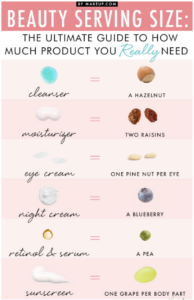
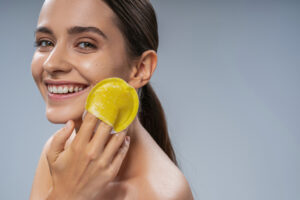
 Normal Mole
Normal Mole Dysplastic Nevus
Dysplastic Nevus Actinic Keratosis
Actinic Keratosis Basal Cell Carcinoma
Basal Cell Carcinoma Squamous Cell Carcinoma
Squamous Cell Carcinoma Melanoma
Melanoma
 An interesting concept, isn’t it? I recently came across an interesting forum discussing an article in Elle Magazine asking this very question.
An interesting concept, isn’t it? I recently came across an interesting forum discussing an article in Elle Magazine asking this very question. Keratosis pilaris is a common skin condition that usually affects the thighs, upper arms, and buttocks. Since keratosis pilaris also can affect the face, it’s sometimes mistaken for acne.
Keratosis pilaris is a common skin condition that usually affects the thighs, upper arms, and buttocks. Since keratosis pilaris also can affect the face, it’s sometimes mistaken for acne.
 Eczema and psoriasis are some of the most challenging skin conditions encountered by skin care professionals. Often, there will simply be a little red rash on the skin and you may be left scratching your own head trying to figure out how it came to be. Up to 20% of the world’s children suffer from eczema I and II, and up to 3% of adults suffer from either eczema or psoriasis III Given that the world population just reached the 7 billion mark, that’s a lot of people!
Eczema and psoriasis are some of the most challenging skin conditions encountered by skin care professionals. Often, there will simply be a little red rash on the skin and you may be left scratching your own head trying to figure out how it came to be. Up to 20% of the world’s children suffer from eczema I and II, and up to 3% of adults suffer from either eczema or psoriasis III Given that the world population just reached the 7 billion mark, that’s a lot of people!





